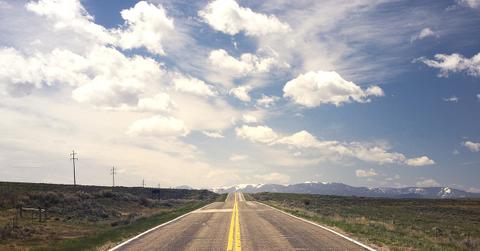This Paint Reflects Sunlight On Streets To Help Keep Cities Cool
In order to combat urban heat islands, GuardTop has created a road sealant called "CoolSeal." It's designed to reflect sunlight and reduce the heat absorbed by roads, and it will be tested out in multiple parts of Los Angeles, California.
Updated May 23 2019, 9:35 a.m. ET
Different colored roads could have a significant impact on how much heat is absorbed during the summer months. For example, Los Angeles, California, will be testing out a grey “cool pavement” called CoolSeal that will likely reflect more of the sunlight and thus decrease the urban heat island that many metropolitan areas deal with. Should it be successful, it could see widespread adoption across the country.
The urban heat island (UHI) is an area in the city that’s much warmer than its surroundings. This is generated from the environment (such as extremely warm weather) and human modification. As cities get bigger, they’ll likely boost their UHI. Increasing temperature within cities creates major problems, such as impacting air and water quality with more pollutants. This affects not only our health, but the environment, as well.
This spawned the development of CoolSeal by GuardTop, a paint that goes over black asphalt to reflect the sun’s energy. Normal roads can absorb up to 95 percent of sunlight with standard black asphalt. In hot summer months, that would significantly jump up the UHI temperature. This gray paint that’s plastered on the top of these roads could decrease street temperatures by 12 degrees Farenheit, according to Seeker.
CoolSeal is one of the many products developed by GuardTop, who has been in the business of road sealcoats since 1983. They created the new product as way to continue their commitment to sustainability. According to their website, “products are manufactured using recycled materials and are always environmentally friendly and free of any toxins and carcinogens.”
Currently the product is being tested in parts of Los Angeles. Ideally, the product will be used at parking lots and near buildings that are focused on reaching LEED certification. They’ve been able to reflect a third of solar heat that would have been absorbed so far, and even under the most extreme conditions, the seal will allegedly have no problems continuing to work for years without maintenance.
By reflecting heat, it can also naturally cool things down. This leads to less air conditioning use and less electricity being required during the day. It can also protect those laboring outside during hot summer months.
Further testing still needs to be done on the product before it becomes used nationally. George Ban-Weiss, an assistant professor of civil and environmental engineering at USC, studies the impact UHI has in Los Angeles and surrounding areas. He reminds us that in order for cool pavements to be effective, they can’t give off more carbon emissions during production than they can protect us from.
While the science is still up for debate on it, Ban-Weiss did praise Los Angeles for “taking the right approach” with testing CoolSeal. Should it have a bigger impact in keeping down greenhouse gases and the UHI, it wouldn’t be a surprise to see many other places adopt the new paint in the near future.
